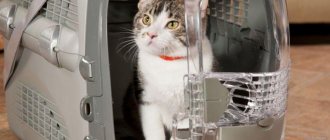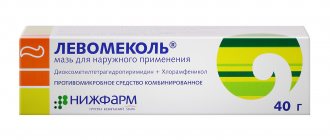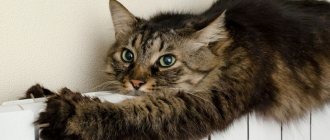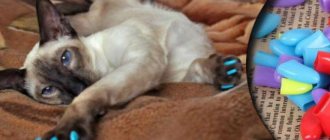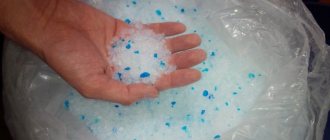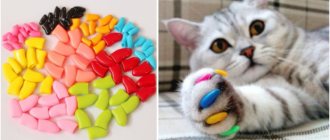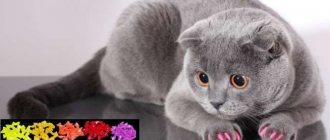Every cat lover knows firsthand what ties on furniture are. Cats love to sharpen their claws on everything they like: furniture, clothes, curtains, carpets, etc. They do this not “out of harm.” Sharpening claws is a natural need of an animal. Of course, you can simply trim your pet’s nails, but animals are not happy with this procedure. And the owners themselves do not always like this painstaking and dangerous task.
- 2 Benefits and harms of anti-scratch products for cats
- 3 How to choose anti-scratch products for cats of different ages
- 4 Rules for using anti-scratch pads
4.1 When not to cap cats’ claws
- 4.2 How to glue cat claw caps
- 6.1 Video: anti-scratch in action
What are silicone claw pads (anti-scratch)
Anti-scratch pads are cap-shaped covers for animal claws. The caps are made of soft, flexible silicone. The linings are also called “soft claws”. They are placed over cats' clipped claws to protect them from scratching.
anti-scratch is a device for protection against scratching
Anti-scratch pads were invented by veterinarian Toby Wexler (USA). This discovery became an alternative to onychectomy (declaw removal), as painful removal was considered the most inhumane way to protect against scratching. In civilized countries, onychectomy is prohibited, so anti-scratch treatments quickly became popular throughout the world. They come in different sizes, so they are suitable for cats aged four months and older. In addition, caps are now sold in different colors. However, anti-scratch pads are not just a fashionable device; sometimes purchasing such pads is vital. It is recommended to purchase claw pads in the following cases:
- if the animal is aggressive and rushes at guests;
- if the cat is overly playful and therefore violently attacks family members;
- if the cat is jealous and cannot come to terms with the appearance of another pet in the house (trying to “revenge” it);
- if there are small children in the house;
- if your pet has health problems (for example, with atopic dermatitis, the cat itches, scratching the skin until it bleeds).
Price
Anti-scratch kits for cats are sold as a set of caps of the selected size and glue, as well as instructions. The cost of one set is in the range of 250-350 rubles (for 20 pieces in a set).
A greatly reduced price may be a reason to doubt the integrity of the seller. Usually, cheapness is achieved by selling low-quality glue , which can cause an allergic reaction or even poisoning if swallowed.
The benefits and harms of anti-scratch products for cats
anti-scratch products can be harmful to your pet's health
The benefits of anti-scratch pads are obvious. A cat wearing such a “manicure” will not be able to harm either things or children. Moreover, the animal will not be able to harm itself.
Every cat breeder has seen how cats itch. Some animals do this with particular frenzy. In this case, the pet can scratch its skin until it bleeds (or even tear its skin). Because of this, wounds are formed, which itch even more as they heal. They can also become infected.
In addition, some “advanced” cat owners try to purchase all kinds of devices for their pets. Instead of gray (yellowish, sometimes ugly) claws, the cat's paws will have beautiful "soft claws." But in addition to benefits, anti-scratch products can also cause harm. The pad may grow into the pad of the paw. But claws can grow in without a cap, so this is only indirect harm. You need to examine your pet's paw more often. Typically, ingrowths occur when they are not applied correctly. According to the rules, the cap should not fit to the claw all the way to the base, but with an indentation of several millimeters. You should also not put caps on untrimmed claws.
In addition, the cat can get injured (and even pull out a claw) if the pad gets stuck in something. To prevent this from happening, you need to monitor what the animal comes into contact with. For example, the cap can get stuck in grilles or cracks, or get caught in blinds or long carpet fibers. After all, a cat walking outside can get stuck in a tree or get caught on a nail. Control is especially important at first, until the cat adapts to the anti-scratch treatment.
Possible complications
In order not to worsen the health of the animal, to avoid complications when wearing anti-scratch guards, you need to remember the following basic points:
- You should not apply anti-scratch pads to a sick animal with an infection or fungus on its paws.
- It is necessary to monitor the condition of the animal’s pads and paws in the first days to prevent the appearance and spread of infectious or inflammatory processes.
- The main complication is an allergic reaction that may occur in cats to glue. Its consequences can be swelling and redness on the fingers and pillows, irritation. In these cases, you should not postpone a visit to the veterinarian. You will have to give up anti-scratches and undergo a course of treatment.
For 2-3 days from the moment the caps are put on, the cat will not behave quite normally. The pet will have a natural desire to remove strange objects from its claws, so the following changes in its behavior may appear:
- aggressiveness and irritability;
- expression of dissatisfaction;
- change in gait;
- constant attempts to chew off the caps.
How to choose anti-scratch products for cats of different ages
Anti-scratch pads can be used from 4 months of age
Depending on the age of the animal, you need to choose the size of the pads. To do this, you need to have an idea of the system of their sizes:
- tiny (XS) - for kittens from 4 months;
- small (S) - for cats whose weight is 2.5–4 kg;
- medium (M) - for cats from 4 to 7 kg;
- large (L) - for large breeds of cats (from 8 kg and above).
If the issue with the size of the pads is resolved, you need to pay attention to other nuances. As a rule, the caps are packaged in a transparent bag (the bag may be inside the box). Review the product. The linings must be smooth, without flaws or damage. The packaging must be undamaged. Pay attention to the instructions and labels on the packaging. The manufacturer should not cause you any doubts.
When faced with a choice between an expensive, high-quality item and its budget option, the latter often wins. However, anti-scratch products are not an expensive purchase in themselves. The packaging lasts a long time, which means you can buy the more expensive option.
Rules for using anti-scratch pads
Before you start working with anti-scratch products, you need to carefully study the instructions
The package can include up to 40 pads, glue and instructions. Before starting work, you should carefully study the operating instructions. If you stick the caps only on the front legs, the package will be enough for 4 times. The pads stay on the claws for up to 8 weeks. If the cat does not take them off earlier, and you put them on strictly according to the instructions, then the packaging will last for several months (up to six months) . If you make a mistake with the size, the caps can be changed at the seller or trimmed. At the time of fitting it will become clear whether there is such a need.
When not to cap cats' claws
Anti-scratch guards are intended for domestic cats. That is, for those animals that do not end up on the street. Firstly, the owner cannot always keep track of the cat if it goes out. And there are many dangers on the street (for example, claw injury). Secondly, the animal must be able to climb to some height (if necessary).
Anti-scratch guards should also not be placed on the claws of pets prone to allergies (the cat may not tolerate glue). The original packaging comes with good quality glue, so the risk of allergies is low. But no one can guarantee the quality of the glue that comes with cheap fakes.
It is not advisable to stick caps on the claws of a sick cat
If your pet is sick, it is better not to irritate him with innovations. A weakened animal may not resist, but due to an unexpected “manicure” the cat may become stressed. This may make the condition worse.
How to glue cat claw caps
Before gluing the pads, you need to organize a fitting (without glue) on already trimmed nails. There is no need to trim the nails completely. It is enough to cut off the sharp corner of the claw and also treat it with a nail file on all sides. After this, the claws are degreased, for example, with alcohol (you can use acetone, but the cat may not like the pungent smell). This is necessary for better adhesion to the glue. The cap should not slip off, and its edges should be at a distance of 3–5 millimeters from the base of the claw. If this indentation is not a balloon, then the overlay can be shortened using scissors. After trying on all the caps, you can begin gluing. You need to work with glue very carefully. If there is too much of it, a drop of glue will fall on the cat's fingers, and it will hurt the cat when it moves. You can follow the following plan:
- Calm the cat (you can pet it or give it a treat) so that it is not afraid.
- Place a small amount of glue inside the cap.
- Take the cap in your right hand, and lightly press on the paw with your left so that the animal releases its claws.
- Place the cap on the desired claw (without releasing your left hand).
- Make sure that the glue does not get on the skin near the claw.
- Wait a while (5 minutes) until the glue dries.
If there is still a lot of glue, you need to wipe off the excess with a napkin. This must be done quickly so that the glue does not have time to dry. After gluing all the caps, the cat will try to rip them off, so you need to distract the cat (with food or a toy) for some time after the procedure.
How often should you change cat claw attachments?
It is possible that from time to time the cat will remove the anti-scratch protection itself.
If your four-legged friend sometimes tears off (loses) the pads, they can be re-glued. You cannot use the old cap; you will need to glue a new cover each time. Moreover, you don’t have to wait until all the anti-scratch pads fall off; you can add them one at a time.
Some who have never tried it before buy several sets of anti-scratch products in different colors. For example, in bags of 10 or 20 pieces. Using the entire set at one time, for “correction” you will have to open another bag. The next time you completely replace all the pads, one cap may not be enough. Therefore, it is more convenient to buy anti-scratch pads with a large number of pads of the same color, for example, 40 or 60 pieces. Or buy several packages of different colors and mix. Such methods are suitable for those people who already have an adult cat (the size of the claw will not change).
Of course, anti-scratch pads do not stick forever. The natural claw must sometimes be released, but tearing off a tightly fitting pad is painful for the animal. Therefore, you can wait until your pet's claw is updated. As the claw tissue is renewed, old cells will die off. Thus, the cap will easily come off along with the dead layer of the claw. This can happen about a month after gluing. In younger cats, this period may be shorter (about 3 weeks), but this is rare. A properly glued cap can last up to 8 weeks.
Pet's reaction
It would seem that with the invention of nozzles the problem was resolved. The owner gets preserved furniture, the cat gets intact and unharmed claws. The desired compromise has been achieved. But is it really that simple?
Getting used to anti-scratching is a real test for a cat
It is pointless to expect that after “dressing” in foreign attachments, the animal will not feel anything and will live as before. At first, the cat's movements may seem constrained and awkward. It's time to remember the importance of claws when moving on a variety of surfaces - with attachments, orientation is dulled, and the animal literally learns to walk again.
You can never predict what kind of relationship a pet will develop with anti-scratch dogs.
Also be prepared for the fact that your pet will not support your decision. An animal's attempts to remove foreign material from its claws are completely natural. Therefore, it is worth stocking up on several packages at once - some agile individuals remove all the hated caps in a couple of days. Until your pet gets used to the new Armor, the untouched attachments must be kept at the ready.
Reviews from owners and veterinarians
Sometimes cat owners devote so much time and effort to caring for their pet that it becomes difficult not to share their experience with others
There are many online forums devoted to topics about cats and cats. Cat breeders share their victories and disappointments, experiences and knowledge. And sometimes inexperienced pet owners just need advice. Few owners know about anti-scratches. Those who have already tried to use them are either satisfied with the device (and praise it) or disappointed (and criticize it). Some people who tried anti-scratch products got completely unexpected results.
I glued these to my cat, they are great. What’s funny is that I haven’t even run out of one box, but I stopped gluing them to him, I just continue to cut them, because he’s used to his nails not being scratched and has stopped even tearing up rugs. But I glued them to him from a young age. When you glue, make sure that the glue with the cap does not stick to the finger, otherwise the nail will grow and it will hurt the cat.
Forum user
https://m.woman.ru/home/animal/thread/4363561/https://m.woman.ru/home/animal/thread/4363561/
It often happens that after improper use unpleasant consequences occur. And the point here is not in the shape of the caps, or even in the quality of the glue. It’s just that every new item always evokes many different emotions. And here it’s up to you to decide whether to use it or not.
These anti-scratches are not needed, I was convinced from my own experience. I bought them for my cat, now I am suffering both myself and the cat. She took off all these caps, I didn’t re-sculpt them so as not to torture the animal, but one of her caps couldn’t be removed, and the nail festered. Today I wanted to take her to the vet, but Sunday is a day off, and in the evening I’m going on a business trip until Friday, how will my cat be here without me.
tory11, forum visitor
https://www.zoovet.ru/forum/?items=20&page=2&tem=307273&tid=18



